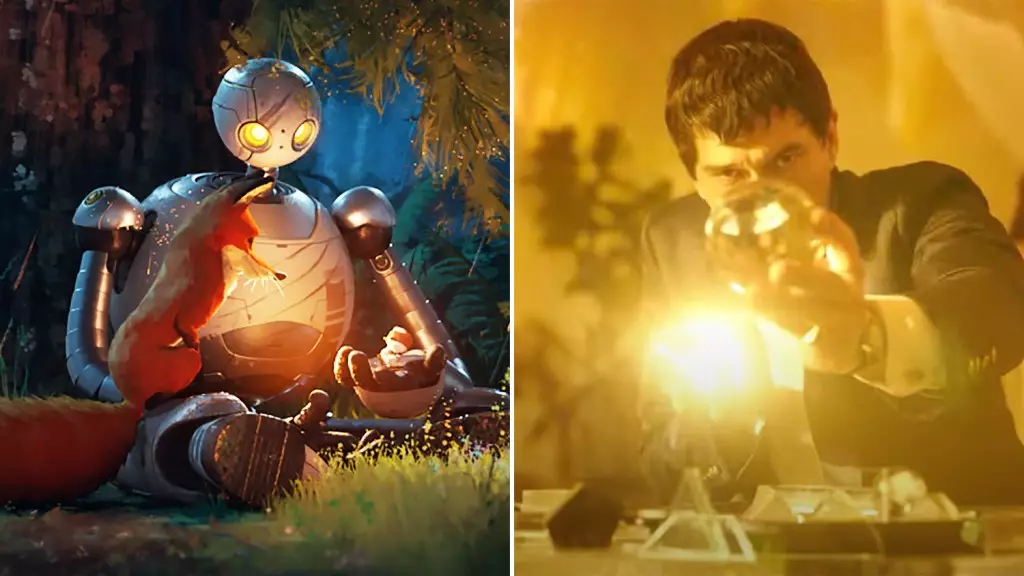The opening weekend of September has become an intriguing time for family films, as cinephiles and families alike flock to theaters seeking engaging narratives and stunning visuals. This weekend, audiences will have the opportunity to delve into the animated world of DreamWorks Animation/Universal’s latest offering, *The Wild Robot*, based on Peter Brown’s NYT bestseller. As the film gears up for its premiere in over 3,900 theaters, it is poised to earn upwards of $20 million in its opening weekend. But how does this figure compare to other recent releases like *Transformers One*, which debuted to a robust $24.6 million last weekend?
Assessing Box Office Projections
The projected box office of *The Wild Robot*, sitting comfortably around the $20 million mark, aligns closely with historical expectations for animated films released during September. Animated movies often experience lower initial box office runs, particularly when they are original concepts that aren’t filled with legacy characters or established franchises. In contrast, while *Transformers* benefits from brand recognition, *The Wild Robot* taps into a different demographic, leaning towards female audiences and families looking for heartfelt storytelling, rather than the action-driven narrative that typically characterizes male-oriented films.
What’s also interesting to note is that *The Wild Robot* is likely to occupy a majority of the premium screen spaces available, including 380 IMAX locations. The film will also make use of new cinematic technologies, including Dolby Cinema and 4DX, which could enhance viewer experience significantly. This trend toward immersive experiences has become vital, especially as audiences return to cinemas seeking not just entertainment but also an unforgettable experience.
A Deeper Look Into *The Wild Robot*
*The Wild Robot* has already garnered acclaim, with a stunning 98% rating on Rotten Tomatoes following its premiere at the Toronto International Film Festival. This critical success may generate additional buzz and encourage families to consider it as a viable weekend outing. Directed by Chris Sanders, a notable figure in animation with a history of successes like *How to Train Your Dragon*, the film tells the story of Roz, a robot who finds solace in adapting to life on a deserted island while befriending local wildlife, including an orphaned gosling. This theme of connection and survival resonates powerfully, and the voice cast, featuring talents like Lupita Nyong’o, Pedro Pascal, and Bill Nighy, adds an impressive layer of quality to the film’s production.
Moreover, Universal’s strategic marketing efforts, including a life-size promotional robot at San Diego Comic-Con, display an intense commitment to establishing *The Wild Robot* as an Oscar contender. This commitment not only prepares the film for a successful box office run but also strengthens its place within the animated feature conversation heading into award season.
In contrast to the family-centric approach of *The Wild Robot*, Lionsgate’s *Megalopolis*, directed by cinematic luminary Francis Ford Coppola, targets a more mature demographic. With an ambitious budget of $120 million, it is set to open with projected earnings between $5 million and $7 million. Yesterday, *Megalopolis* premiered at the New York Film Festival, followed by a limited preview run across select markets, further enhancing the film’s mystique. Despite some unfavorable reviews emerging post-Cannes, where it was met with a mixed bag of critical responses, interest remains pulsating, likely tied to the film’s audacious nature and the director’s storied career.
Interestingly, Lionsgate’s decision to finance but not shoulder the promotional costs associated with *Megalopolis* speaks volumes about the current state of the film industry, which often finds itself at a crossroads between daring, unique releases and the well-trodden formulas of blockbuster franchises.
As we watch *The Wild Robot*, *Megalopolis*, and films like *Beetlejuice* vie for audience attention, it prompts reflection on the multifaceted experience cinema offers. From family-friendly narratives to profound thematic explorations, each film showcases the versatility of storytelling in contemporary cinema.
In a time when audiences are increasingly discerning and diverse in their tastes, the comparison between *The Wild Robot* and more established franchises raises questions about the future of animated features and films outside of traditional genres. As consumers gravitate toward immersive experiences and meaningful stories that resonate emotionally, studios will need to adapt and explore these trajectories carefully.
Moreover, the tension between blockbuster franchises and unique storytelling indicates a shift in audience preferences, often favoring originality and emotional impact over brand familiarity. As the cinematic landscape continues to evolve, it is this dynamic that will determine both box office success and critical acclaim moving forward.
The weekend’s offerings reveal not just the titles themselves but the broader trends and shifts in the entertainment world, hinting at intriguing possibilities for the future of both family films and more artistic endeavors. The balance of commercial viability and cinematic innovation remains critical, demanding that storytellers push boundaries and entice audiences with new narratives.

